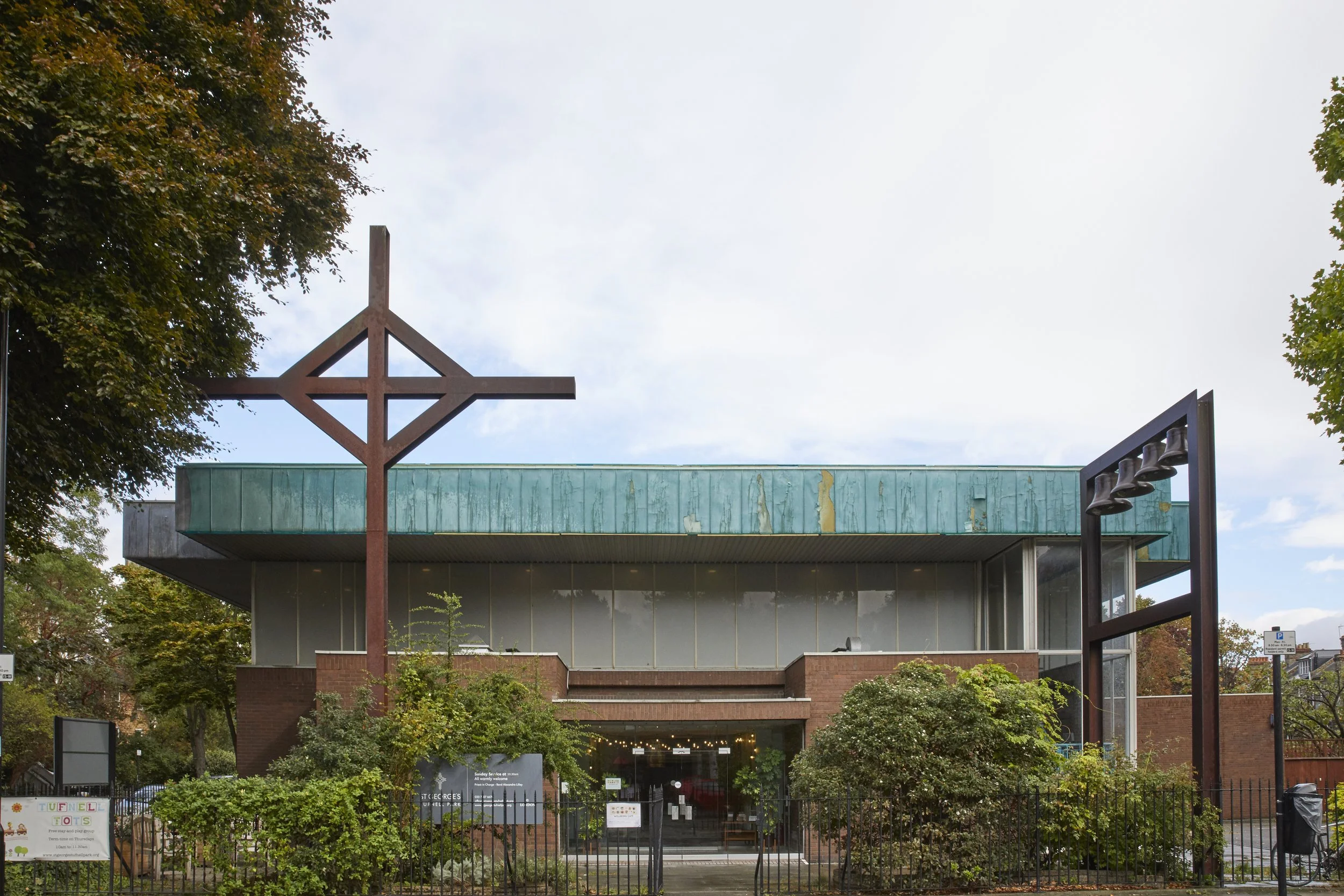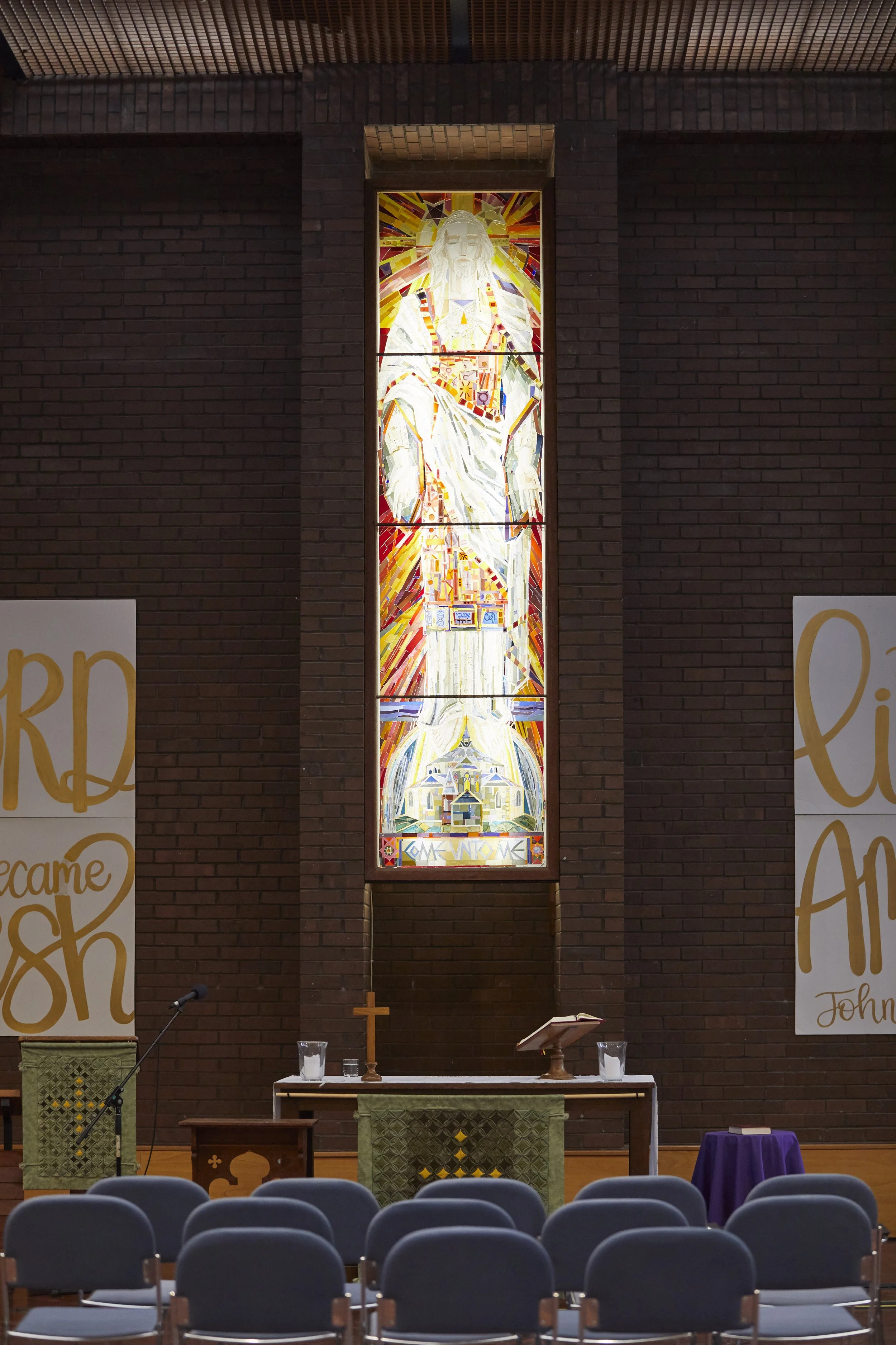St George & All Saints has a rich and fascinating history, beginning in 1861.
Early Beginnings
The Church of England began serving the Tufnell Park area in 1861, when the large parish of St Mary Islington was divided into smaller units. At the time, North London was growing rapidly due to the expansion of the railway at King’s Cross. Housing developments replaced the fields of the Tufnell Estate, and a new church was built, dedicated to St George.
The original Victorian church on Tufnell Park Road was inspired by a 5th-century church in Salonica.
Changes Over Time
The old building suffered damage during the war and was later vandalised. In the 1970s, it was sold, and a new church was built in 1974 by architect Clive Alexander, located almost opposite the original site.
The old church building was transformed into a Shakespearean theatre, which operated for 25 years before being purchased and renovated by the House on the Rock, a Nigerian church.
Parish Merger
In the 1990s, St George’s parish merged with All Saints Tytherton Road, after the All Saints church was converted into residential flats.
Modern Renovations
In 1995, local architect David Gibson redesigned the interior of St George’s to include:
A Prayer Chapel
Meeting Room
Counselling Room
Kitchen
Crèche
Upper Gallery
Art & Memorials
One of the church’s most striking features is the icon of Christ as High Priest on the East wall, created by artist Doritie Kettlewell (1916–2014). Made from thin sheets of coloured glass, the icon includes inscriptions in:
Greek: “I am the Truth”
Hebrew: “I am the Way”
Arabic: “I am the Life”
At the base is an image of the old church, surrounded by a rainbow, symbolising God’s promise of mercy.
Outside the entrance, our large electronic bells are a well-known local landmark.
We also house war memorials from All Saints Tytherton Road, honouring local men who died in the World Wars. There is a memorial to a member of the Tufnell family, who were patrons of the original Victorian church.



